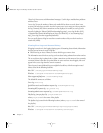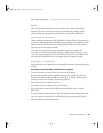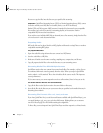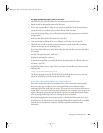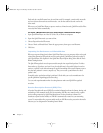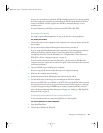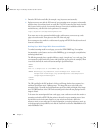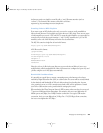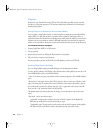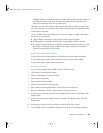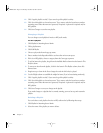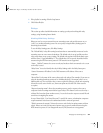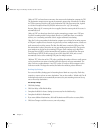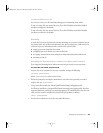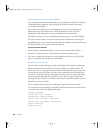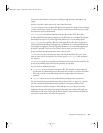34 Chapter 2
Playlists
Playlists are sets of media files in the QTSS or DSS media folder specified to play one after
the other or in random sequence. This section provides basic information on creating and
working with playlists.
Using Playlists to Broadcast Prerecorded Media
You can create a virtual “radio station” or video broadcast by setting prerecorded QuickTime
media, MPEG-4, or MP3 files to play in a specified order (a playlist). Setting up a series of
playlists broadcasts the media to the streaming server, which sends the media to viewers in the
sequence you set up (random or ordered). Although the media is prerecorded, it appears to
viewers as a live broadcast. All viewers see the same media when they tune in to the broadcast.
To broadcast media in a playlist:
1 Prepare QuickTime, MPEG-4, or MP3 media.
2 Create a playlist.
3 Start broadcast service by clicking the Play button for each playlist.
4 Tell users how to connect to the broadcast.
For movie playlists, provide an RTSP URL. For MP3 playlists, provide an HTTP link.
Working With Playlist Settings
You can change playlist settings in the Playlists pane of Streaming Server Admin.
To see a playlist’s settings, click Playlists, then click the name of the playlist you want to see in
the Available Playlists pane, and click Edit Playlist.
“Name” is the name you give your playlist and the name that appears in the Available Playlists
pane.
“Mount Point” is the path section of the URL you give to clients (or that you embed in a web
page). You must give the mount point a name (often the same name as the playlist). Spaces
are automatically converted to underscores and “.sdp” is appended to the name of the file.
Don’t use the “.sdp” extension if this is an MP3 playlist.
The playlist name and mount point must be unique. No two broadcasts can use the same
name.
“Play Mode” can be one of three types:
“Sequential” broadcasts the media in the order in which it appears in the playlist file.
When the last media file has ended, the broadcast stops.
“Sequential Looped” broadcasts the media in the order in which it appears in the playlist
file. When the last media file has ended, the playlist repeats in the same order.
LL0329.book Page 34 Wednesday, November 20, 2002 2:09 PM



